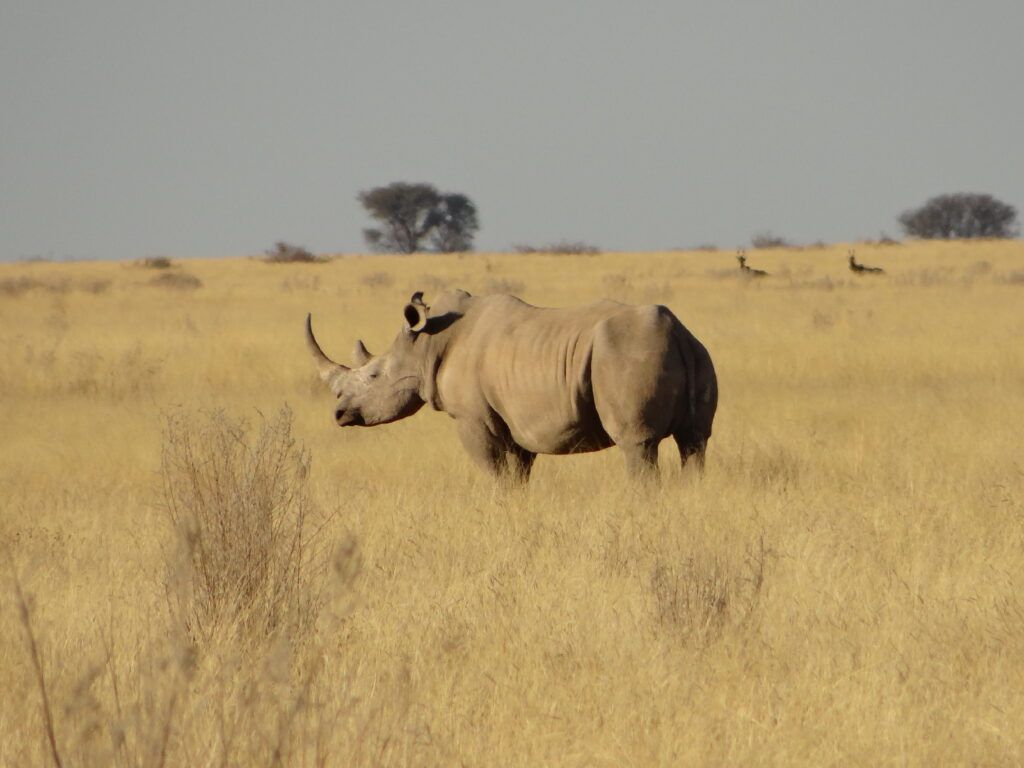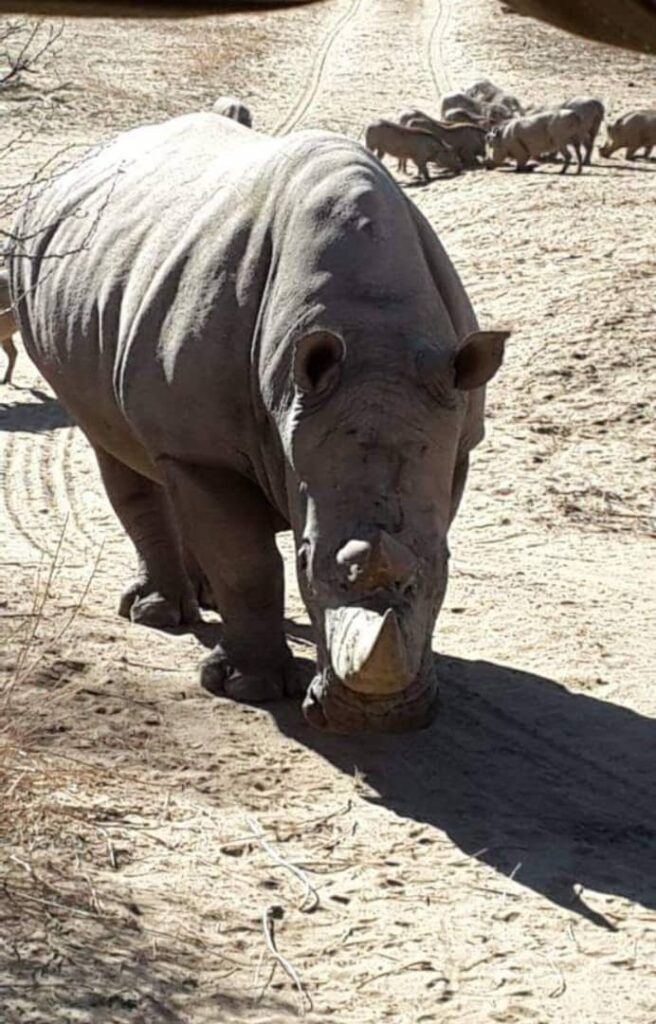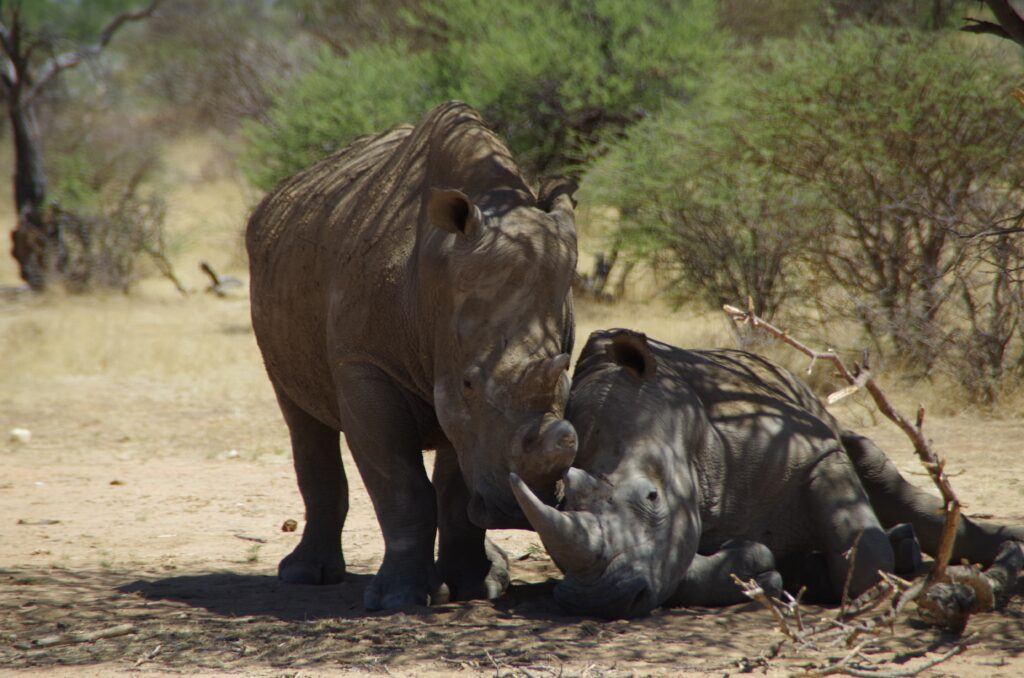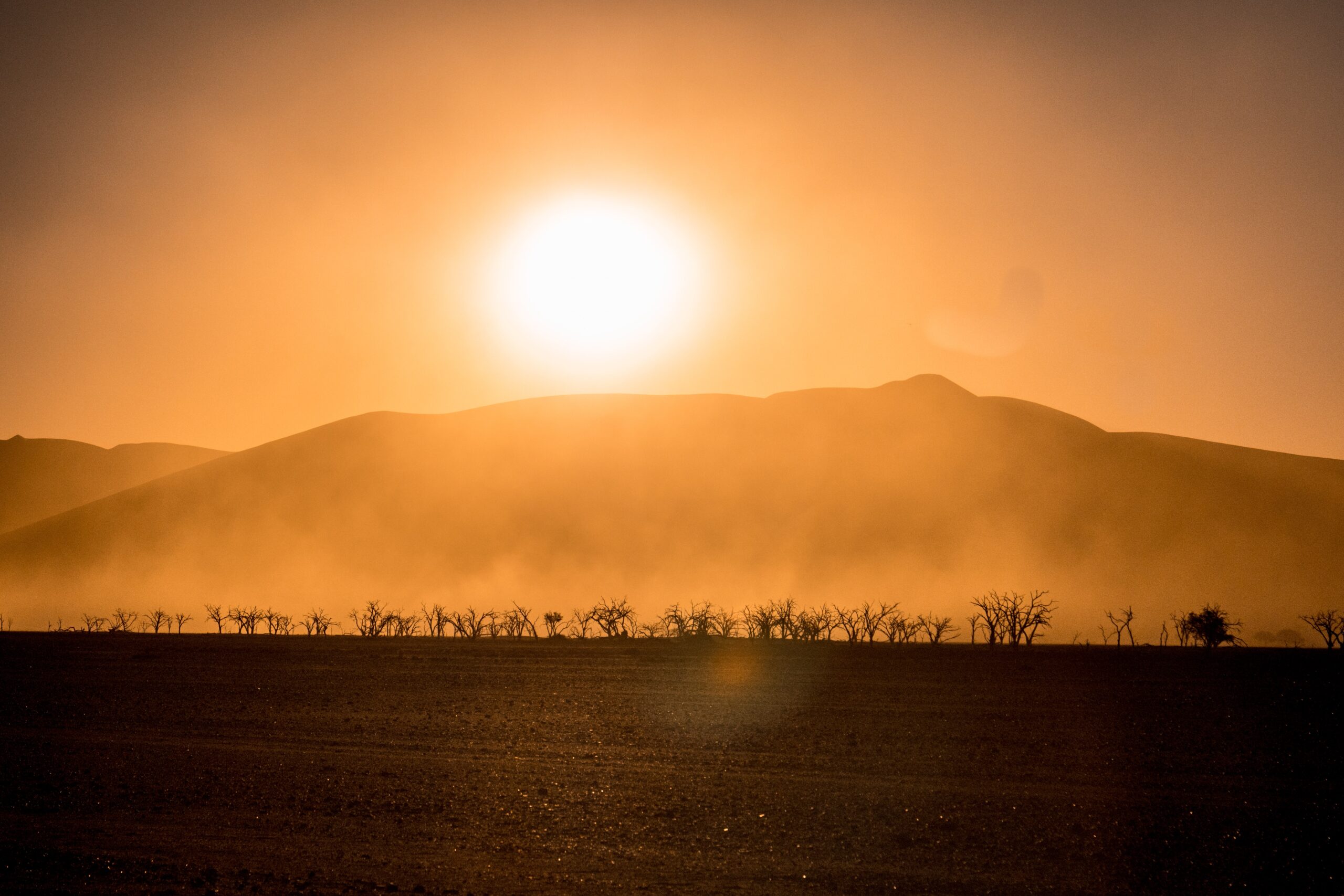Namibia is home to both black rhinoceros (Diceros bicornis) and white rhinoceros (Ceratotherium simum) populations. Rhino conservation has been a key focus in the country due to the threats these magnificent creatures face. Here’s an overview of rhinos in Namibia:
Namibia is home to both black and white rhinoceros populations. Black rhinos are generally found in arid and semi-arid regions, while white rhinos are found in savannas and grasslands.
Rhino populations are found in various regions of Namibia, including national parks, private game reserves, and communal conservancies. Some of the notable areas include Etosha National Park, Damaraland, and the Kunene Region.
Rhinos, especially black rhinos, have faced severe threats such as poaching for their horns. Conservation efforts in Namibia have focused on protecting and increasing rhino populations. Both species are listed on the International Union for Conservation of Nature (IUCN) Red List, with black rhinos categorized as critically endangered.
Rhino horn poaching has been a significant threat to rhino populations globally. Rhino horns are illegally traded for their perceived medicinal value in some cultures. In Namibia, conservation authorities and organizations have implemented anti-poaching measures to combat this threat.
Namibia has implemented various conservation initiatives to protect rhinos. These include anti-poaching patrols, community-based conservation programs, and the relocation of rhinos to safer areas. The Namibian government works in collaboration with NGOs and international organizations to address poaching threats.
Community-based natural resource management is a key aspect of rhino conservation in Namibia. Local communities are actively involved in the protection of rhinos, and their participation is often crucial for the success of conservation efforts. In some cases, communities benefit economically from rhino-related tourism.
Rhino tracking is a popular activity in some Namibian conservancies, allowing tourists to observe rhinos in their natural habitats. Responsible tourism contributes to both conservation funding and local community development.
Conservationists and researchers conduct studies to monitor rhino populations, movements, and health. This information is used to develop effective conservation strategies and management plans.
Translocating rhinos to safer areas is a conservation strategy employed in Namibia. This involves moving rhinos from areas with higher poaching risks to more secure locations, contributing to their overall safety and well-being.
Namibia’s approach to rhino conservation is multifaceted, involving the collaboration of government agencies, conservation organizations, local communities, and international partners. The country’s commitment to sustainable and community-based conservation has played a significant role in the protection of rhinos and their habitats.






